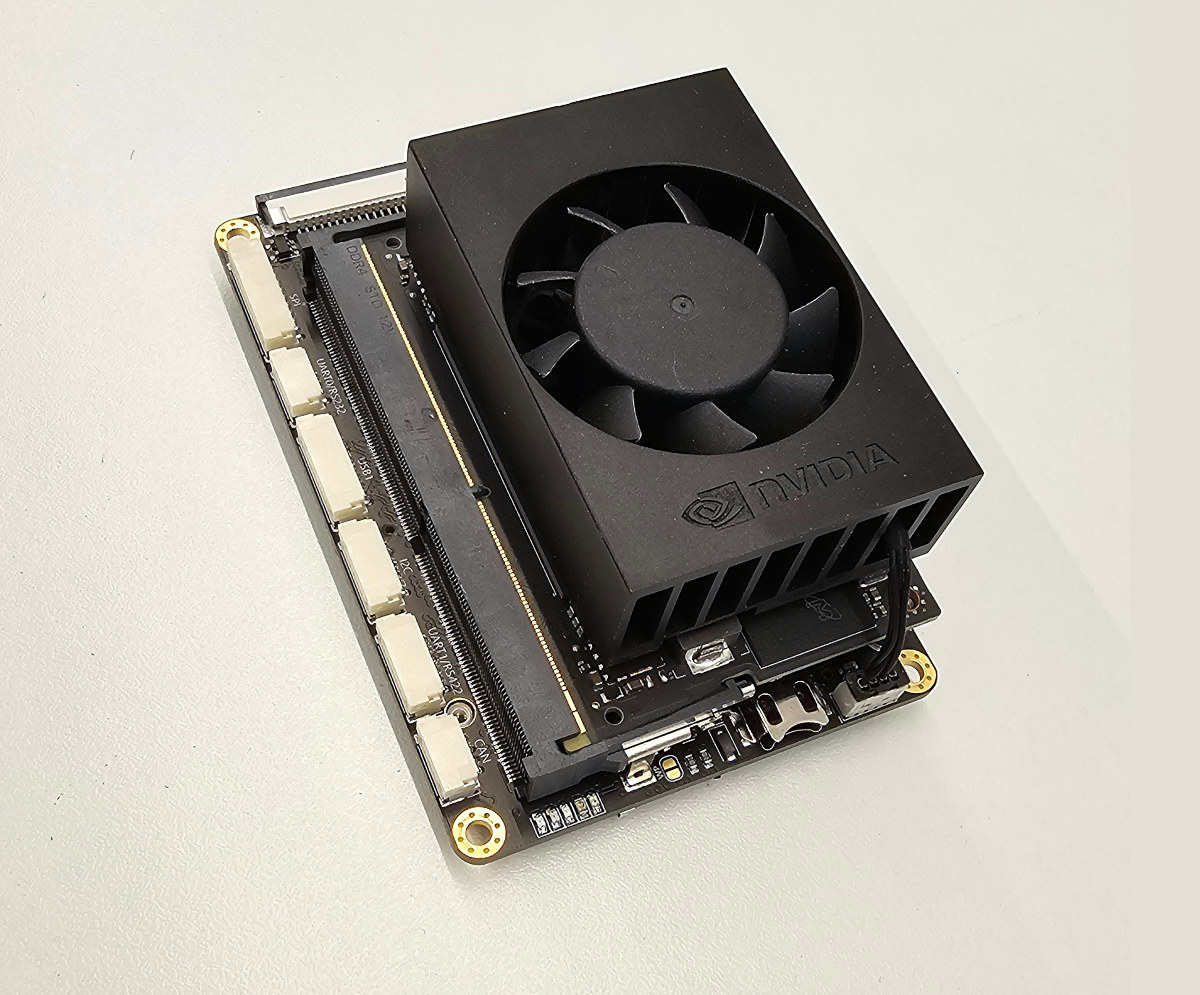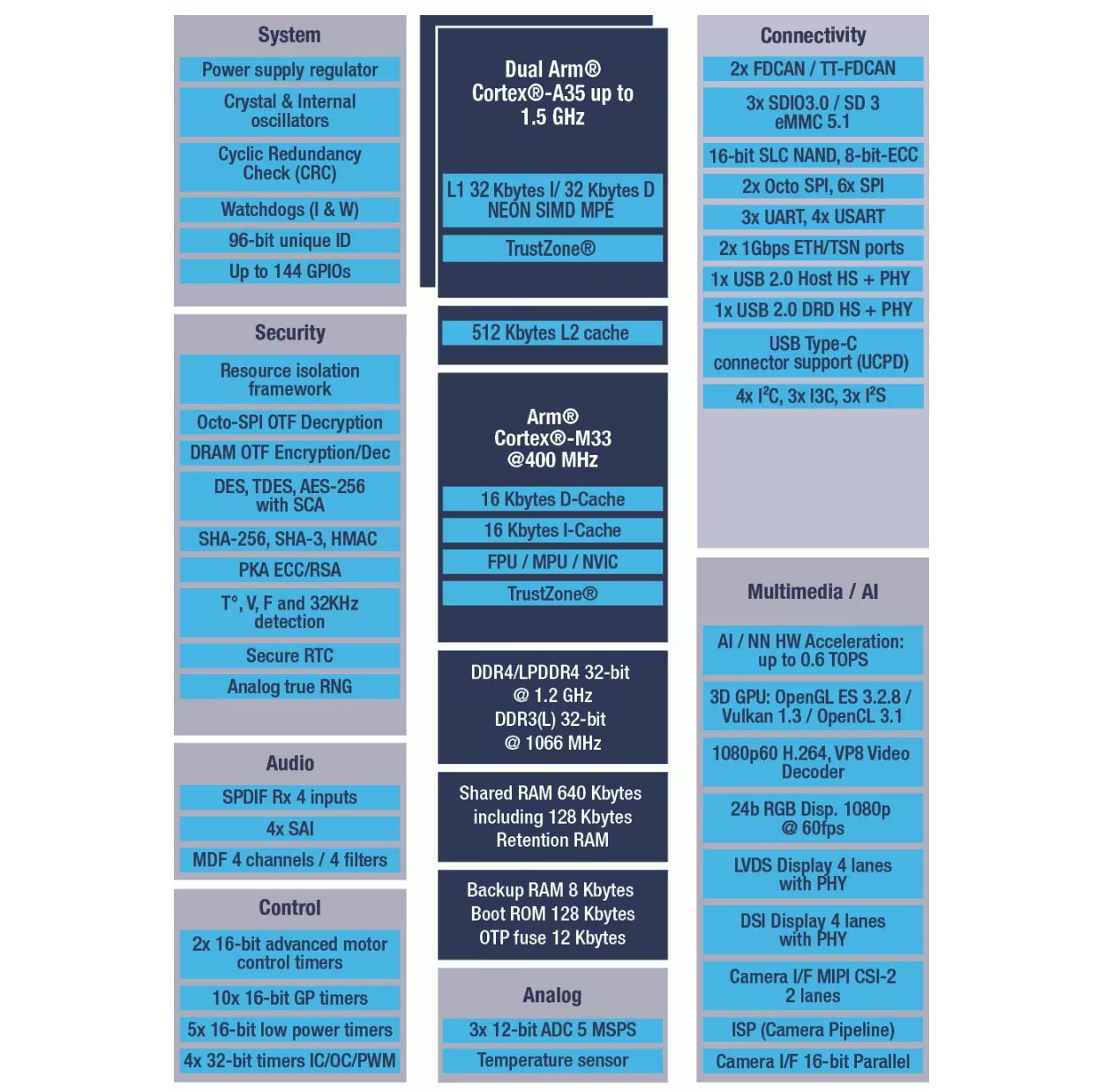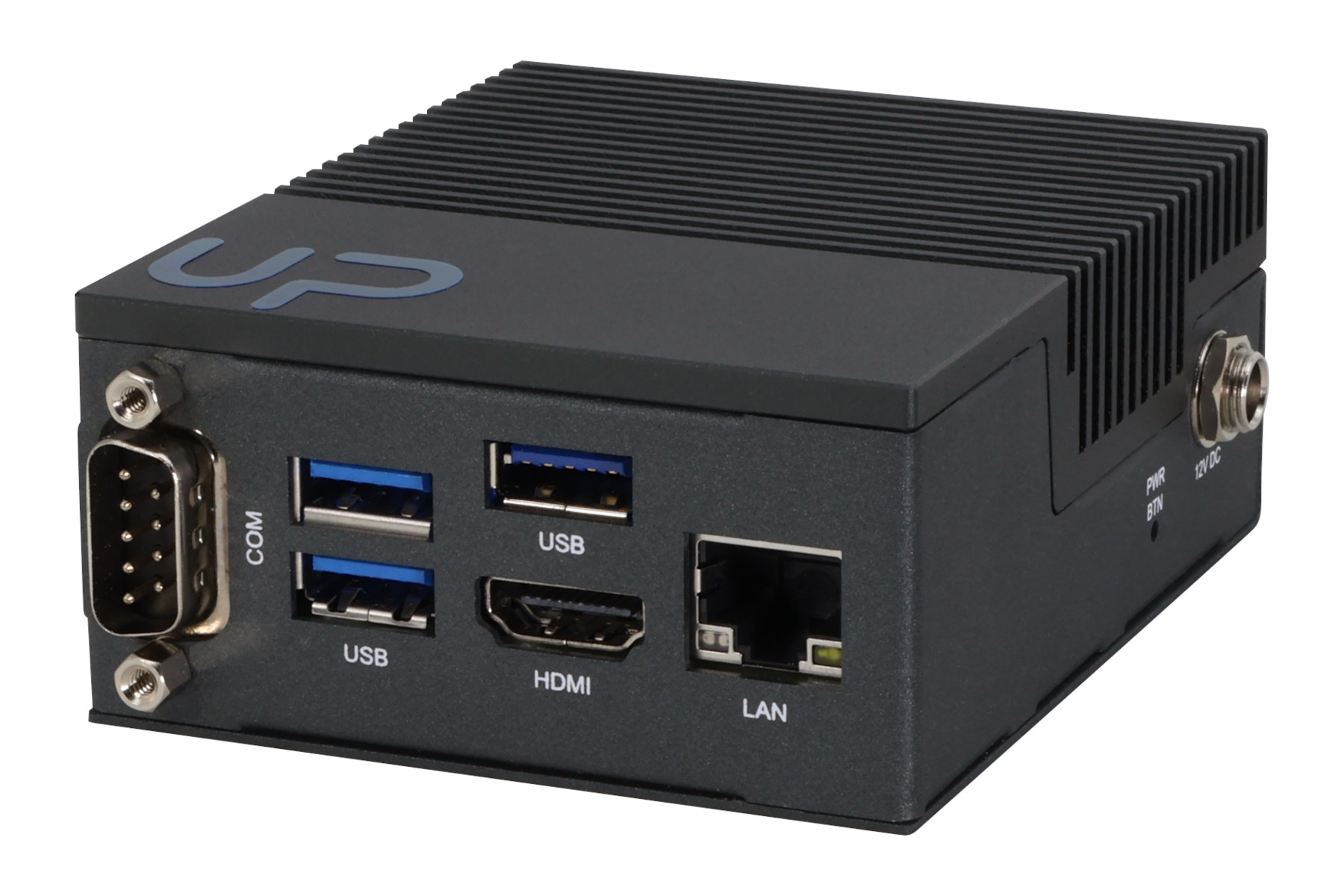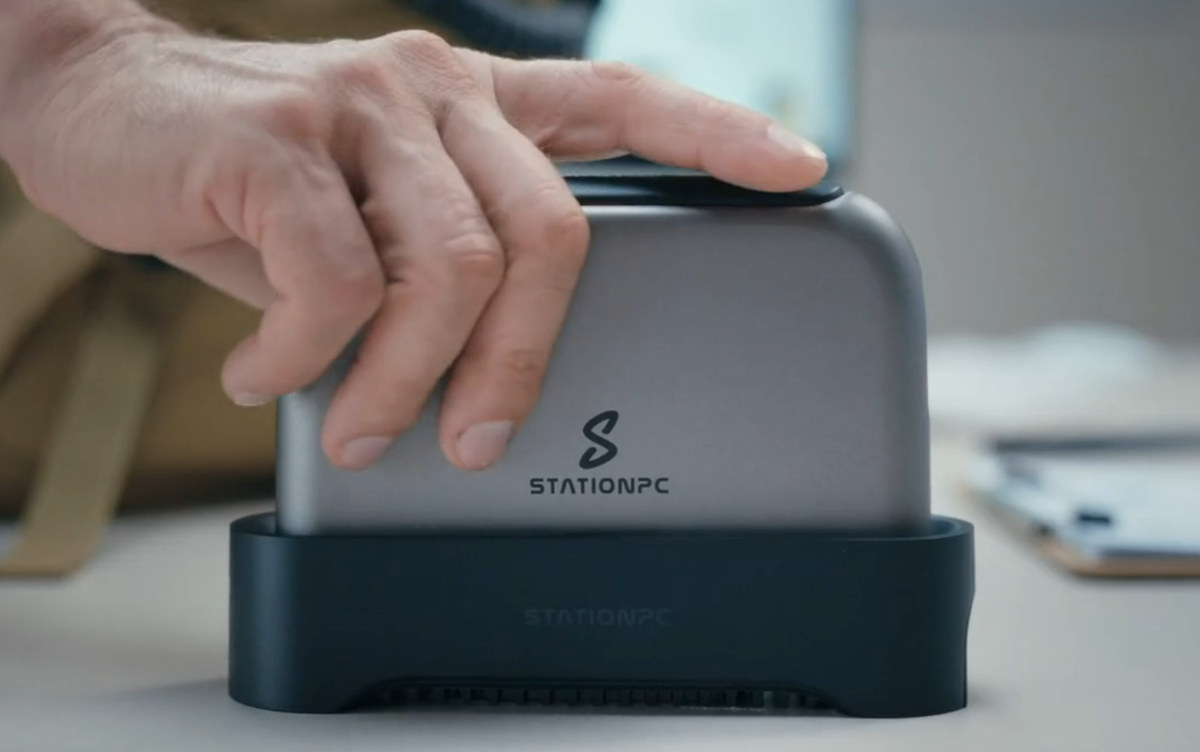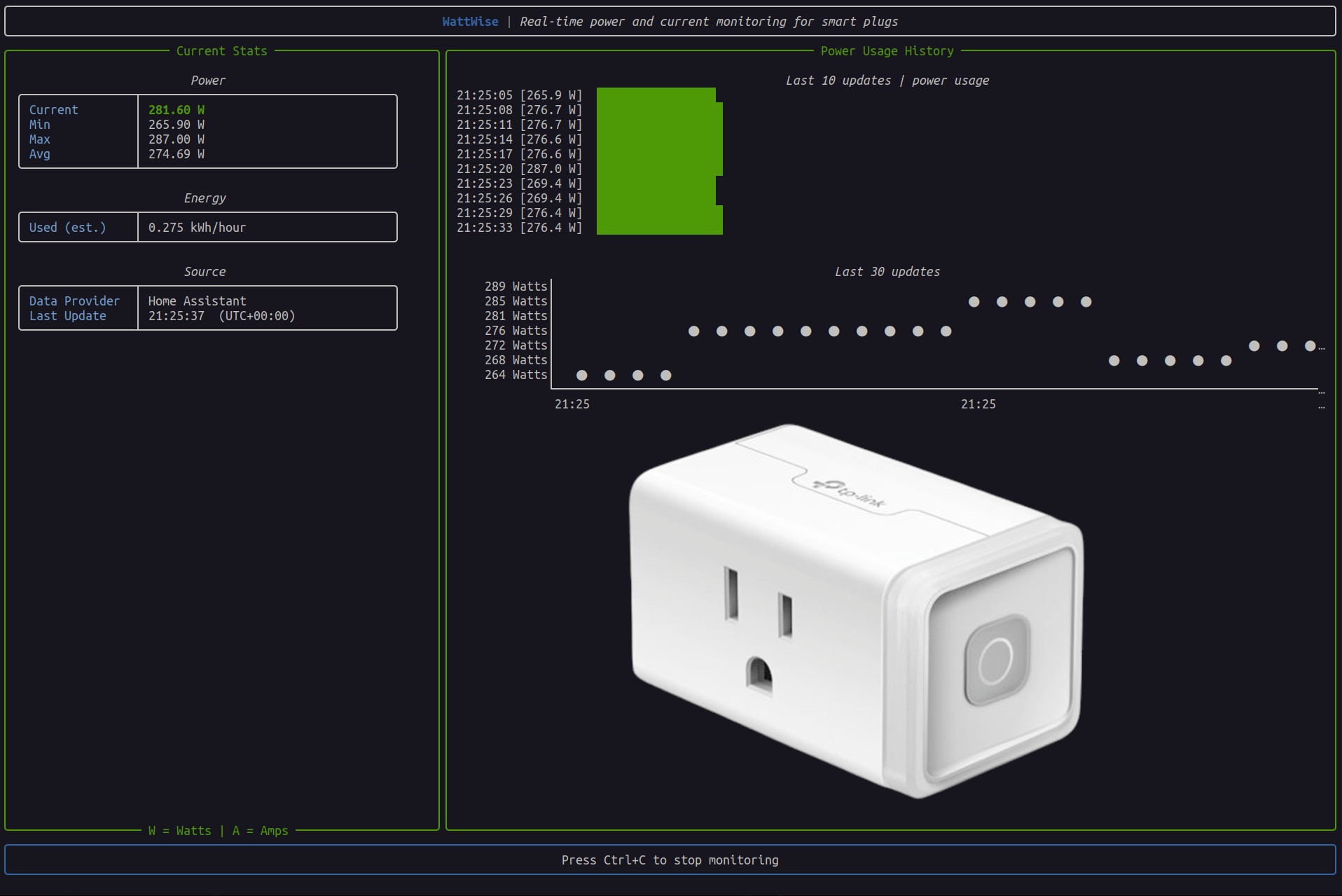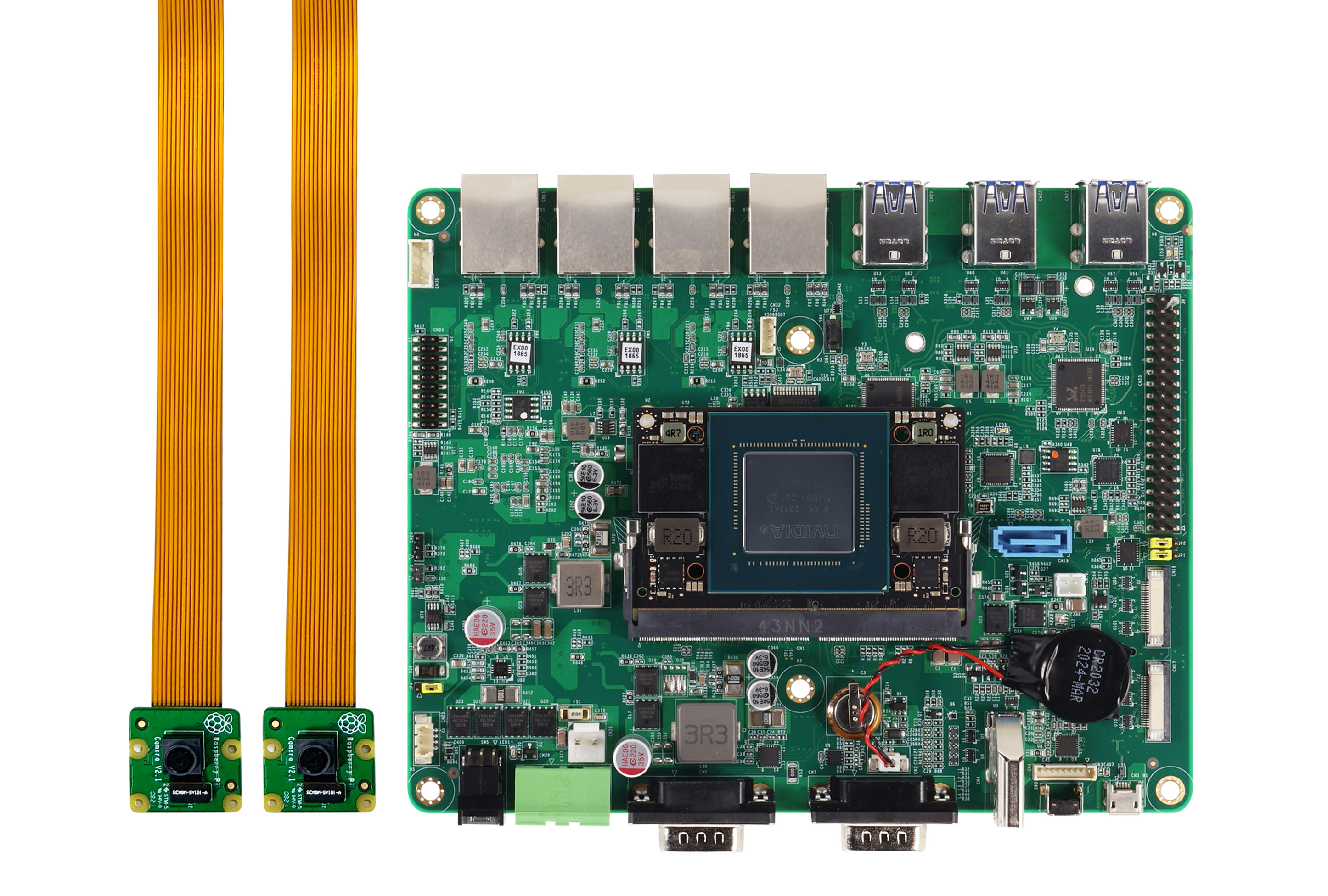ADLINK COM-HPC-mMTL is an industrial-grade COM-HPC Mini Computer-on-Module based on Intel Meteor Lake processors up to the 16-core Intel Core Ultra 7 165H featuring Intel Arc Graphics with eight Xe cores, Intel AI Boost NPU up to 8.2 TOPS, and 16x PCIE Gen4 lanes. The COM-HPC R1.2-compliant Mini size module also supports up to 64GB LPDDR5x memory soldered directly onto the board, an optional NVMe BGA SSD, and features two SATA interfaces, two 2.5 Gbps Ethernet, multiple DDI/USB4, and USB 3.0/2.0 through the standard 400-pin board-to-board connector of the 95x70mm CoM. ADLINK COM-HPC-mMTL specifications: Meteor Lake H/U SoC (one or the other) Intel Core Ultra 7 165H 16-core (6P+8E+2LPE) processor @ up to 5.0 / 3.8 / 2.5 GHz with 24MB cache, 8x Xe-cores Intel Arc graphics @ 2.35 GHz, Intel AI Boost NPU; TDP: 28W Intel Core Ultra 7 155H 16-core (6P+8E+2LPE) processor @ up to 4.8 / 3.8 […]
Aerium Lumen – An NVIDIA Jetson carrier board for drones and robots
Aerium System’s Lumen is a carrier board for NVIDIA Jetson SO-DIMM modules designed specifically for drones and robots with a range of low-profile connectors for I/Os for USB, UART, I2C, etc…, and three M.2 sockets for storage and wireless expansion. It targets the same applications as ARK Electronics’ NDAA-compliant Jetson Orin Nano/NX carrier board for drones we covered last year, but it’s not sold as a full kit and lacks NDAA-compliance. On the positive side, it is quite smaller and lighter, so it might be better suited to smaller and/or less complex drones or robots that may still benefit from Vision AI acceleration. Aerium Lumen specifications: Compatible system-on-modules NVIDIA Jetson Nano NVIDIA Jetson Orin NX NVIDIA Jetson Orin Nano NVIDIA Jetson Xavier NX NVIDIA Jetson TX2 NX Potentially other Jetson-compatible SO-DIMM modules like the Mixtile Core 3588E, but those are not listed by the company. Storage MicroSD card slot M.2 Key-B […]
STMicro STM32MP23 Cortex-A35/M33 MPU features a 600 GOPS NPU for industrial IoT and ML applications
STMicroelectronics STM32MP23 is a dual-core Cortex-A35 general-purpose microprocessor (MPU) with a Cortex-M33 real-time core, and 600 GOPS of performance operating at up to 125°C and designed for industrial and Internet-of-Things (IoT) edge computing, advanced HMI, and machine-learning (ML) applications. It follows the STM32MP25 series unveiled in 2023 and launched the following year as the first member of the STM32MP2 family. The STM32MP23 is a cost-down version of the STM32MP25 with similar specifications (and pin-to-pin compatible packages), but the new family has a weaker 0.6 TOPS NPU, and tops at two Ethernet ports for the high-end parts instead of three. Ditto for CAN Bus interfaces (2x vs 3x). Other changes include a 16-bit memory interface and the lack of PCIe and USB 3.0 interfaces. STM32MP23 specifications: CPU – Single or dual Arm Cortex-A35 cores running at up to 1.5 GHz or 1.2 GHz with 512KB L2 cache Real-time MCU – Arm […]
AAEON UP 710S Edge Intel Processor N50/N97/N100/N200 mini PC is offered with Windows 11 IoT Enterprise or Ubuntu Pro 24.04 LTS
AAEON UP 710S Edge is a small fanless Mini PC powered by Intel Processor N50, N97, N100, or N200 Alder Lake-N SoC designed for companies wanting to upgrade industrial automation setups, and running Windows 11 IoT Enterprise 24H2 LTSC or Ubuntu Pro 24.04 LTS. Based on the UP 710S SBC introduced last November, the mini PC features a 10-pin terminal block with up to eight GPIOs, SPI, I2C, and PWM, an RS-232/422/485 COM, and support for WiFi and Bluetooth via an M.2 2230 E-Key slot. The computer also offers HDMI video output, three USB 3.2 ports, and gigabit Ethernet networking. UP 710S Edge specifications: Alder Lake-N SoC Intel Processor N50 dual-core processor up to 3.4 GHz with 6MB cache, 16EU Intel UHD Graphics @ up to 750 MHz; TDP: 6W Intel Processor N97 quad-core processor up to 3.6 GHz with 6MB cache, 24EU Intel UHD Graphics @ up to 1.2 GHz; […]
Huginn is a self-hosted, open-source alternative to IFTTT and Zapier
IFTTT and Zapier automation tools enable users to create automated workflows connecting various apps, services, and devices. They are relatively easy to use, but their free tiers are now rather limited, and you have to rely on the cloud. Huginn is a self-hosted, open-source alternative to IFTTT or Zapier that can work on your own network without cloud connectivity. Andrew Cantino released the first version of the project 12 years ago (in 2013) by Andrew Cantino, but it now has a larger community of developers and users. Somehow, I only found out about Huginn when XDA Developers wrote about it earlier this week. Let’s have a look. Developers describe Huginn as a system for building agents that perform automated tasks for you online, and view it as a hackable version of IFTTT or Zapier hosted on the user’s server with full control over the data. Here are some of the […]
PocketCloud – Battery-powered, portable NAS takes up to 16TB of storage (Crowdfunding)
Firefly’s PocketCloud is a battery-powered, portable NAS powered by a Rockchip RK3568B2 quad-core Arm Cortex-A55 SoC with 4GB LPDDR5 of RAM and a 32GB eMMC flash for the OS, and supports up to 16TB of NVMe SSD storage. It’s comprised of the battery-powered PocketCloud itself with WiFi 6 and Bluetooth 5.2 connectivity, and an optional dock with 2.5GbE networking and an additional M.2 NVMe socket. Since I’m unable to find a 16 TB M.2 NVMe SSD for now, I suppose the 16TB claim only works with an 8TB + 8TB configuration with one SSD in the main unit, and the other in the dock. PocketCloud specifications: SoC – Rockchip RK3568B2 (as found in ODROID-M1 SBC) CPU – Quad-core Cortex-A55 processor @ up to 2.0 GHz GPU – Arm Mali-G52-2EE AI Accelerator – 1TOPS NPU System Memory – 4GB LPDDR4 Storage 32GB eMMC 5.1 flash M.2 PCIe Gen3 socket for M.2 […]
WattWise – A command line tool for smart power plugs with energy monitoring
Smart Power plugs help users monitor their appliances’ power consumption, and they’d usually check measurements in a mobile app or a web dashboard. Naveen was not satisfied with this workflow while using a TP-link Kasa EP25 Smart Plug to monitor his LLM workstation’s power consumption. So he wrote the WattWise command-line interface (CLI) for power monitoring smart plugs to allow him to throttle his power-hungry, dual AMD Ryzen EPYC 7C13 workstation following his utility’s Time of Use (ToU) pricing in order to lower his electric bill. The Python tool pulls power usage data from smart plugs directly or through Home Assistant and presents it in a neat terminal-based UI. Key features: Real-time power monitoring with wattage and current display Color-coded power values (green < 300W, yellow 300-1200W, red > 1200W) Historical consumption charts directly in the terminal Automatic CPU/GPU throttling based on time-of-use electricity pricing Configurable power thresholds and performance […]
NV8600-Nano AI Developer Kit features NVIDIA Jetson Orin Nano 8GB, quad GbE, Raspberry Pi Camera Module 2
AAEON NV8600-Nano AI Developer Kit is based on a 67 TOPS NVIDIA Jetson Orin Nano 8GB and ships with a carrier board with quad GbE, a Raspberry Pi Camera Module 2, a fan kit (heatsink with fan), and a 60W power adapter. The carrier board is also equipped with a 256GB M.2 2280 M-key NVMe SSD, a SATA connector, HDMI 1.4 video output, two MIPI CSI connectors compatible with Raspberry Pi Camera Modules, six USB 3.2 Gen 2 Type A ports, a few serial interfaces, a 40-pin GPIO header compliant with the Jetson Orin Nano (Super) developer kit, and two more M.2 sockets for wireless/cellular expansion. NV8600-Nano AI Developer Kit specifications: NVIDIA Jetson Orin Nano 8GB Module CPU – 6-core Arm Cortex-A78AE v8.2 64-bit CPU @ 1.7 GHz with 1.5MB L2 + 4MB L3 GPU – 1,020 MHz NVIDIA Ampere architecture with 1024 CUDA cores and 32 tensor cores Video […]



